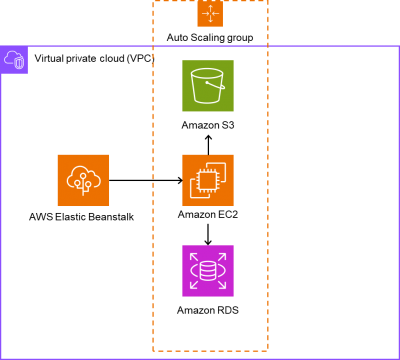Leveraging AWS for Scalable E-Commerce Infrastructure
Introduction
In today’s digital age, e-commerce has become an integral part of our lives, requiring businesses to build robust and scalable online platforms. In previous articles, we’ve learned how to construct a basic infrastructure. Building upon that knowledge, this article explores how to utilize AWS resources to construct a scalable e-commerce platform.
Scenario: Building an E-Commerce Platform on AWS
Step 1: Setting Up AWS Account
Create an AWS Account: If you don’t have an AWS account, sign up for one at https://aws.amazon.com/. Provide necessary details and choose a pricing plan that suits your business needs.
Access AWS Management Console: Once your account is set up, log in to the AWS Management Console.
Step 2: Building Infrastructure
Amazon S3 (Simple Storage Service): Create an S3 bucket for storing product images, media files, and static content. The procedure for configuring public access for static files was covered in the previous articles.
Amazon RDS (Relational Database Service): Set up an RDS instance, such as MySQL or PostgreSQL, to store product information, customer data, and orders.
Amazon EC2 (Elastic Compute Cloud): Launch EC2 instances to host the web application. Utilize Amazon Machine Images (AMIs) to quickly deploy your preferred operating system and application stack.
Amazon VPC (Virtual Private Cloud): Create a VPC to isolate and secure your resources. Configure security groups and network ACLs to control inbound and outbound traffic.

Step 3: Deploying the E-Commerce Application
Elastic Beanstalk: Use Elastic Beanstalk to deploy the e-commerce application. Upload your application code as a ZIP file, and Elastic Beanstalk automatically handles capacity provisioning, load balancing, and application scaling.
Auto Scaling: Configure Auto Scaling to automatically adjust the number of EC2 instances based on traffic load. This ensures the application can handle varying levels of user activity.

Step 4: Enhancing Performance and User Experience
Amazon CloudFront: Set up a CloudFront distribution for global delivery of static content with low latency, referencing the techniques from previous articles.
Amazon Route 53: Register a domain name for your e-commerce site and use Amazon Route 53 for domain registration and DNS management. Create relevant records to route traffic to your CloudFront distribution and EC2 instances.

Step 5: Implementing Security Measures
AWS Identity and Access Management (IAM): Create IAM roles and policies to grant specific permissions to different AWS resources. Ensure principle of least privilege by giving only necessary permissions.
SSL/TLS Certificates: Secure your website with SSL/TLS certificates. Use AWS Certificate Manager to generate and manage SSL certificates for your domain.
Step 6: Monitoring and Analytics
Amazon CloudWatch: Set up CloudWatch to monitor the health and performance of your resources. Create alarms to receive notifications when specific thresholds are breached.
Amazon RDS Performance Insights: Monitor the performance of your RDS database using Performance Insights. Identify and optimize slow queries to enhance database efficiency.

Conclusion
By building upon the foundational knowledge acquired from previous articles on basic infrastructure, constructing a scalable e-commerce platform on AWS becomes an achievable goal. Following the step-by-step guide outlined in this article, businesses can effectively harness AWS resources to elevate their e-commerce infrastructure and deliver an exceptional online shopping experience for their customers.



